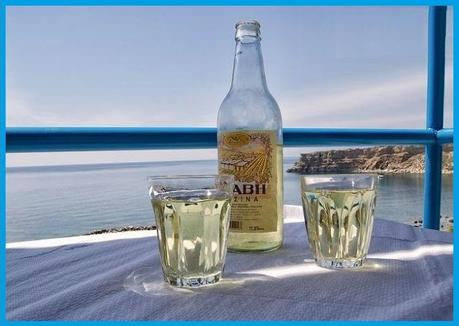On my first visit to dusty Crete (nearly fifty years ago now) I was often told the story of how Retsina originated. The popular myth was that the ancient Greeks needed all the oak available to build ships for their nautical excursions against the Persians, Spartans or Trojans, (the enemy varied with the telling), as a consequence of which they started storing their wine in barrels made from pine instead of barrels made from oak, and the wine thereby took on a resinated flavor. All fanciful nonsense, of course. Wine wasn't kept in barrels in times BC. (Barrels were a Roman invention, around 200 AD.) In ancient Greek times wine was kept in large pottery storage jars or amphorae. And resinated wine didn't really exist in BC either, being a much more recent invention, probably around the first century AD.The most likely explanation for its original popularity dates back to the Roman occupation of Greece some two thousand years ago, when the locals discovered that the Romans didn't like Greek wine that came from amphorae that had been sealed with pine resin. Such wine took on a slightly bitter 'turpentine' taste that didn't suit the Roman palate. It's certainly an acquired taste, one which the incentivised Greeks embraced. Very soon the practice of using pine resin to seal jars of white wine became surprisingly widespread throughout occupied Greece. To me, it's a distinct and lovely taste, unique to and redolent of that wonderful country.Retsina is traditionally made with the Greek Savatiano grape, sometimes blended with Assyrtiko and Rhoditis varieties. It is made in the same manner as other white or rose wines except for the essential addition of small pieces of Aleppo pine resin which are added to the must during fermentation. It should be drunk very cold on a hot day with a good view and a plate of meze.

I'll tell you what I'll do, as I'm a little embarrassed (if I'm honest) about wriggling out of the task in the way that I've done. I'll leave you with the three-line envoi today, and the promise that some time when it's not the hottest Saturday of the hottest week of the year, the rest of the sestina will follow.
Retsina (Envoi)
Enraptured with cool resin-laden wines,Timeless and tideless our golden mindsShimmer in the glowing of the moment.
Thanks for reading, enjoy the heatwave. S ;-) Email ThisBlogThis!Share to TwitterShare to Facebook
